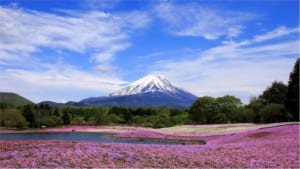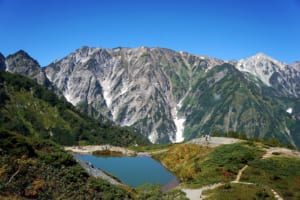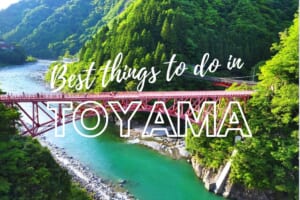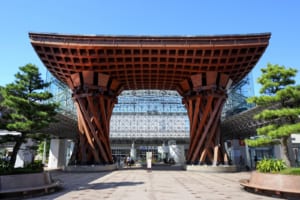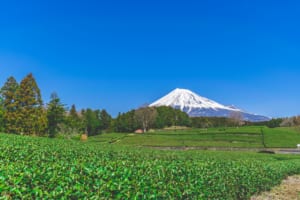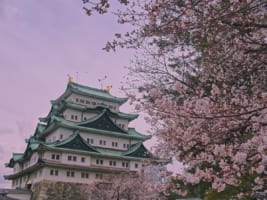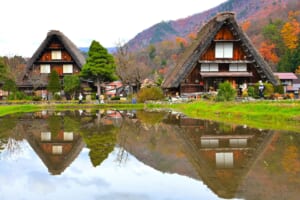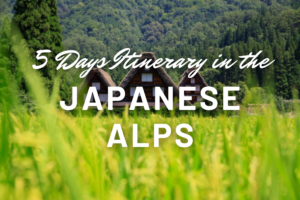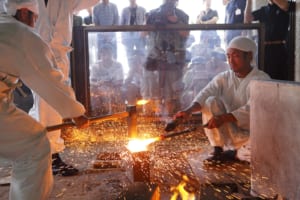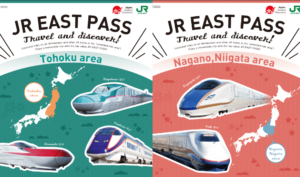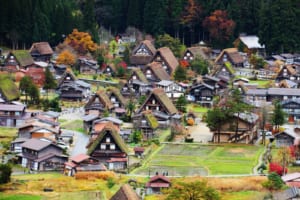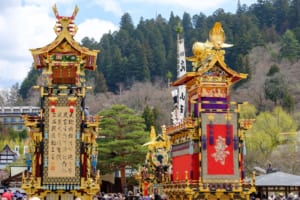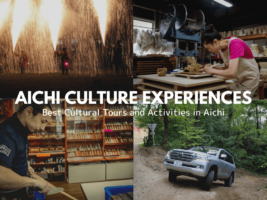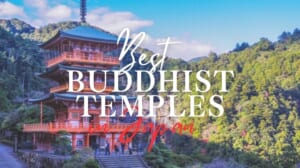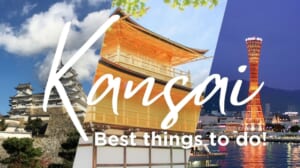Best Things to Do in Chubu
Chubu Unveiled: Nature, Culture, and Culinary Wonders
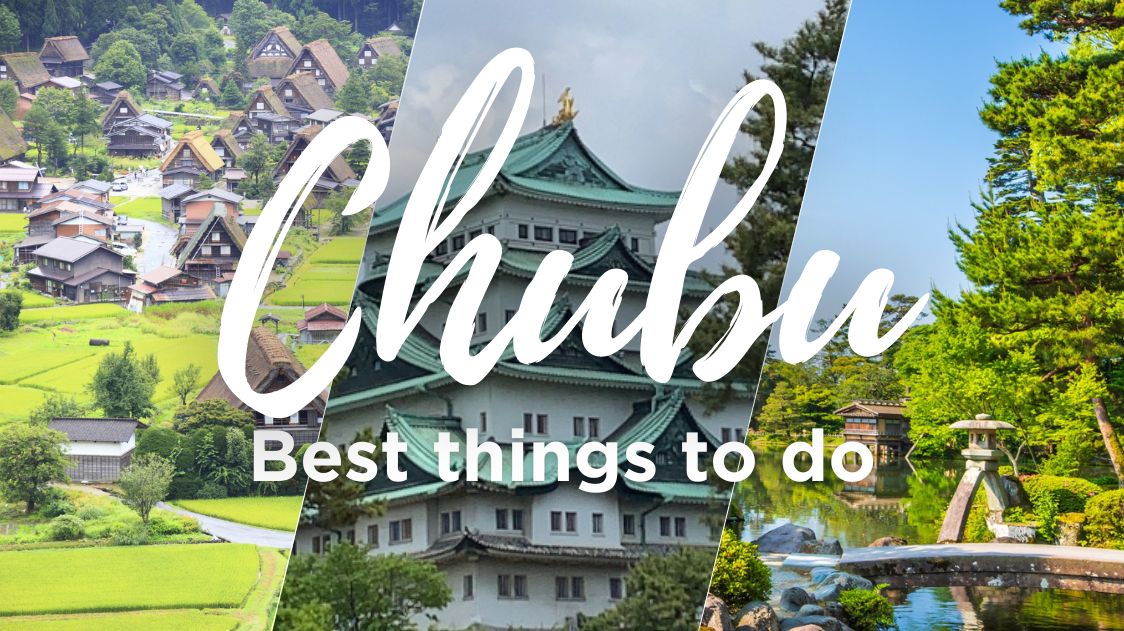
If you’re looking for a travel experience that transcends the usual tourist traps and plunges you into the authentic heart of Japan, look no further than the Chubu region.
Located in the central part of the country, Chubu is a treasure trove of experiences that range from the adrenaline-pumping to the soul-soothing. Imagine skiing down pristine slopes in the morning, savoring world-class sushi by noon, and soaking in an ancient onsen by evening—all within the same region.
With its rich diversity of landscapes, from the majestic Japanese Alps to the idyllic beaches of the Ise-Shima area, Chubu offers an unparalleled diversity of activities and sceneries. Discovering Chubu is like a journey through the very essence of Japan. So, why settle for the ordinary when Chubu invites you to experience the extraordinary? Here we present to you the best things to do in Chubu!
*Please note that this article contains affiliate links
Chubu Region, Japan’s Undiscovered Gem
Japan, a country of contrasts and harmony, is divided into eight major regions: Hokkaido, known for its rugged landscapes; Tohoku, the land of natural beauty and hot springs; Kanto, the bustling hub that includes Tokyo; Kansai, the cultural heartland; Chugoku, with its scenic coastlines; Shikoku, the smallest of the four main islands; Kyushu, famous for its volcanoes; and Okinawa, a tropical paradise. Among these, Chubu holds a special place, acting as the country’s geographical and cultural central role.
Located in central Japan, Chubu is composed of ten diverse prefectures: Yamanashi, home to the iconic Mount Fuji; Nagano, the winter sports capital; Niigata, renowned for its rice and sake; Toyama, with its breathtaking Tateyama mountain range; Ishikawa, famous for its traditional crafts; Fukui, a haven of paleontological wonders; Shizuoka, the land of tea and tangerines; Aichi, the hub of Japan’s automotive industry; Gifu, known for its historic villages; and Mie, a coastal prefecture rich in natural beauty and Shinto history. Each offers a unique slice of Japanese life, making Chubu a region of endless discovery.
<<Buy your bullet train tickets here!>>
<<Buy your JR Takayama-Hokuriku Area Tourist Pass here!>>
1. Climb Mount Fuji
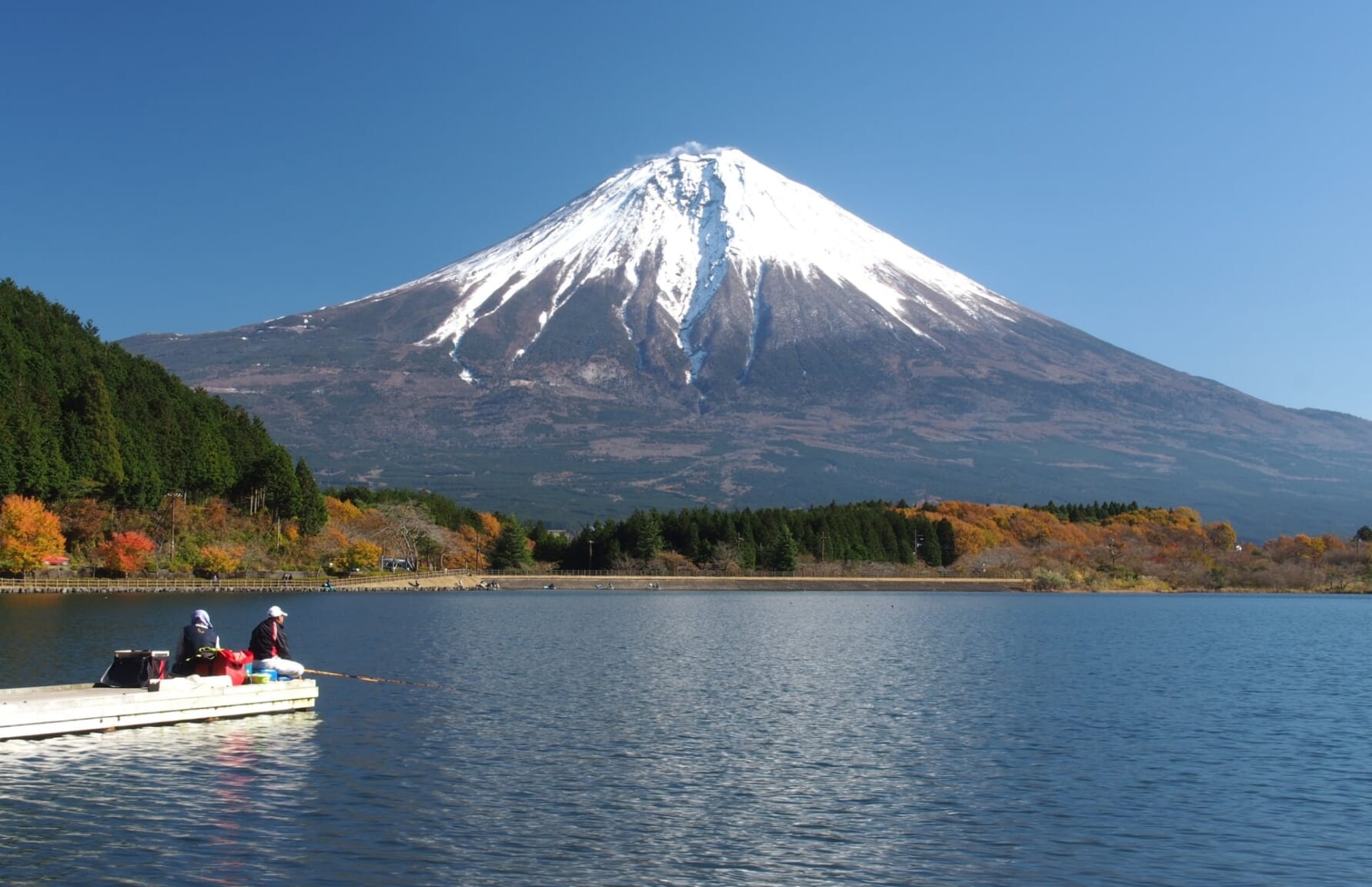
The ascent typically starts from the Fifth Station, accessible from both Yamanashi and Shizuoka sides, and takes you through different ecological zones, each with its unique flora and fauna. As you make your way up the zigzagging trails, the air grows thinner, and the views more expansive. Reaching the summit just in time for the sunrise—a phenomenon aptly called “Goraiko,” or the arrival of light—is an unforgettable experience.
Whether you’re a seasoned hiker or a casual traveler, Mount Fuji offers a challenging yet accessible adventure that encapsulates the awe-inspiring beauty of Japan.
More info: Perfect Guide to Climbing Mt. Fuji
2. Discover the Best Castles in the Region
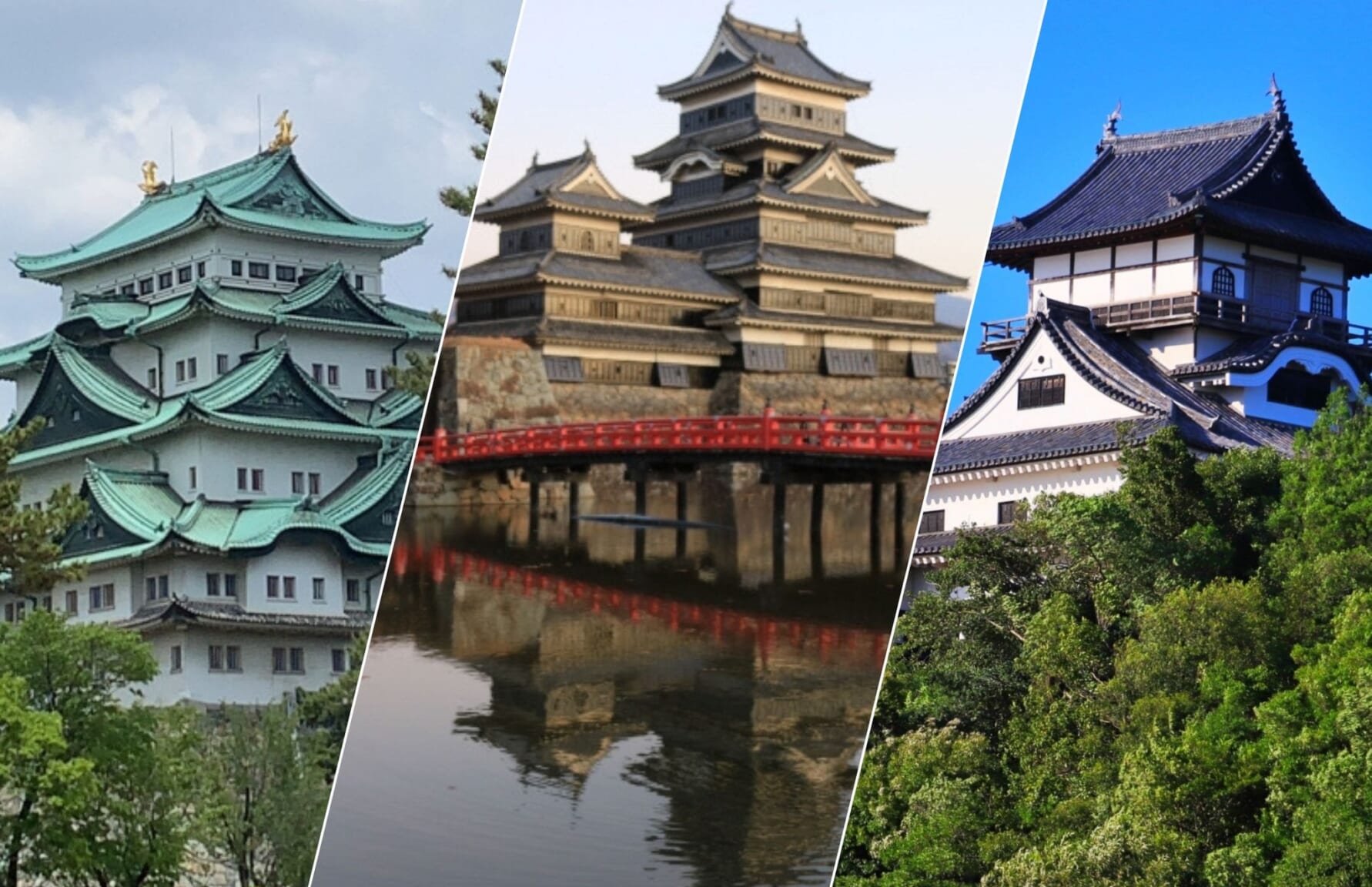
Starting with Nagoya Castle (名古屋城) in Aichi, you’ll be captivated by its golden shachihoko, mythical creatures that are said to protect the castle from fires. The castle also houses an extensive collection of Edo-period art and artifacts, offering a glimpse into Japan’s feudal past.
Moving on to Matsumoto Castle (松本城) in Nagano, the “Crow Castle” stands as a striking contrast with its black exterior and moat, offering panoramic views of the city and the Japanese Alps from its watchtower.
Also, Inuyama Castle (犬山城) in Aichi is a lesson in preservation. As Japan’s oldest and one of the most well-preserved castles, it offers an authentic experience, complete with steep wooden stairs and narrow passages that transport you back to the samurai era.
Each castle tells a different story, making this thematic exploration a fascinating journey through Japan’s history and architecture.
▶ Nagoya Castle official website: https://www.nagoyajo.city.nagoya.jp/en/
▶ Matsumoto Castle official website: https://www.matsumoto-castle.jp/eng
▶ Inuyama Castle official website: https://inuyamajo.jp/
3. Stroll Around Beautiful Japanese Gardens
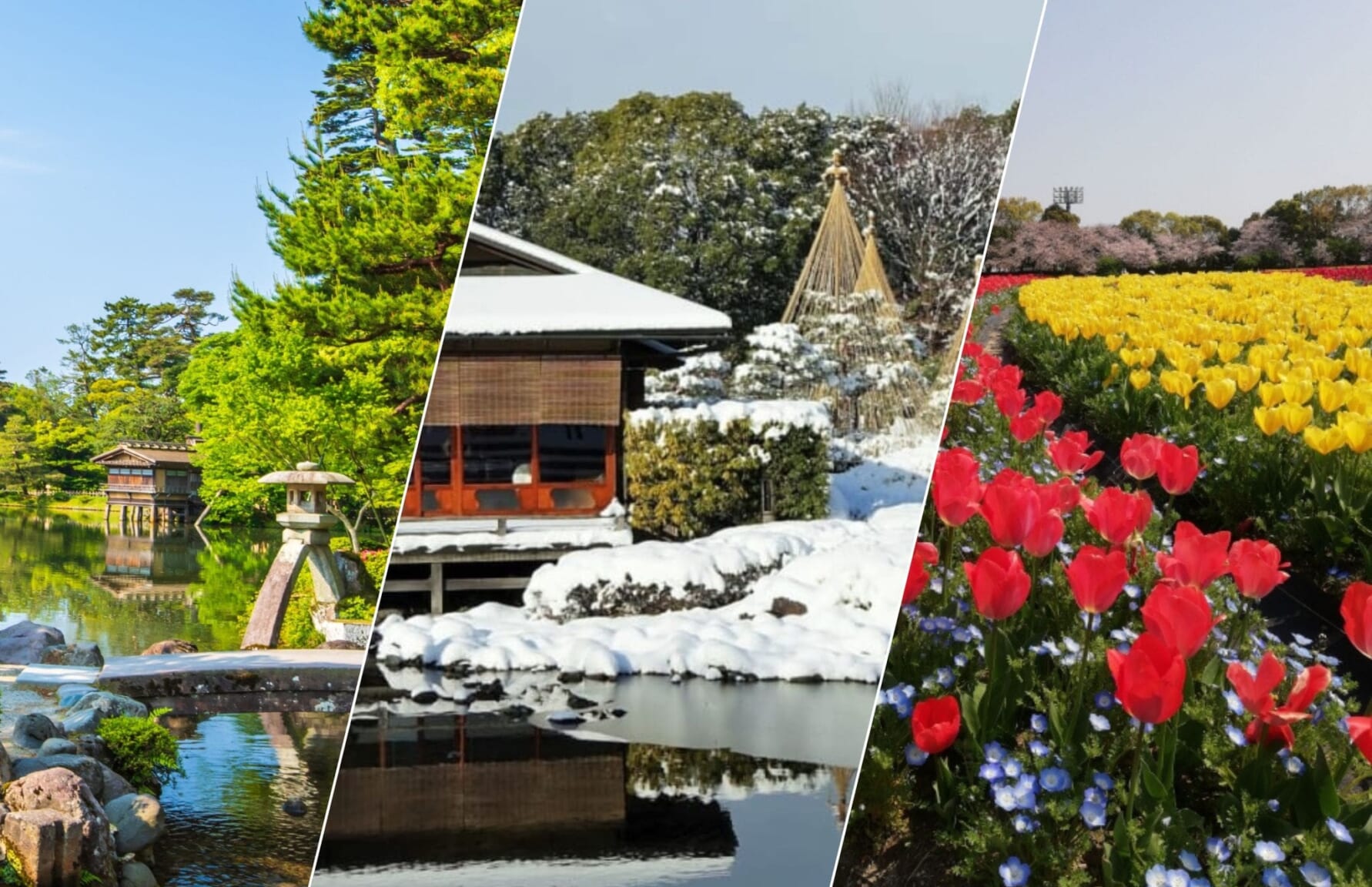
Kenrokuen (兼六園) in Ishikawa is often cited as one of the Three Great Gardens of Japan, and for good reason. With its meticulously arranged ponds, stone lanterns, and seasonal flora, the garden is a living canvas that changes with each season.
In Aichi, the Shirotori Garden (白鳥庭園) offers a different experience, designed to represent the various landscapes of the Chubu region—from its mountains to its rivers and the sea. The garden is a tranquil space, perfect for contemplation and relaxation.
On the other hand, Nabana no Sato (なばなの里), located in Mie Prefecture, goes beyond traditional garden beauty. Renowned for its seasonal flower displays, it transforms into a magical wonderland during winter with one of Japan’s largest illumination events. The garden features themed light tunnels, animated displays, and even a light show set to music, making it a year-round attraction that blends natural beauty with artistic creativity.
▶ Kenrokuen Garden official website: http://www.pref.ishikawa.jp/siro-niwa/kenrokuen/
▶ Shirotori Garden official website: http://www.shirotori-garden.jp/english/index.html
▶ Nabana no Sato official website: https://www.nagashima-onsen.co.jp/nabana/index.html
More info about Japanese gardens: 15 Best Gardens in Japan
4. Visit Jigokudani Snow Monkey Park
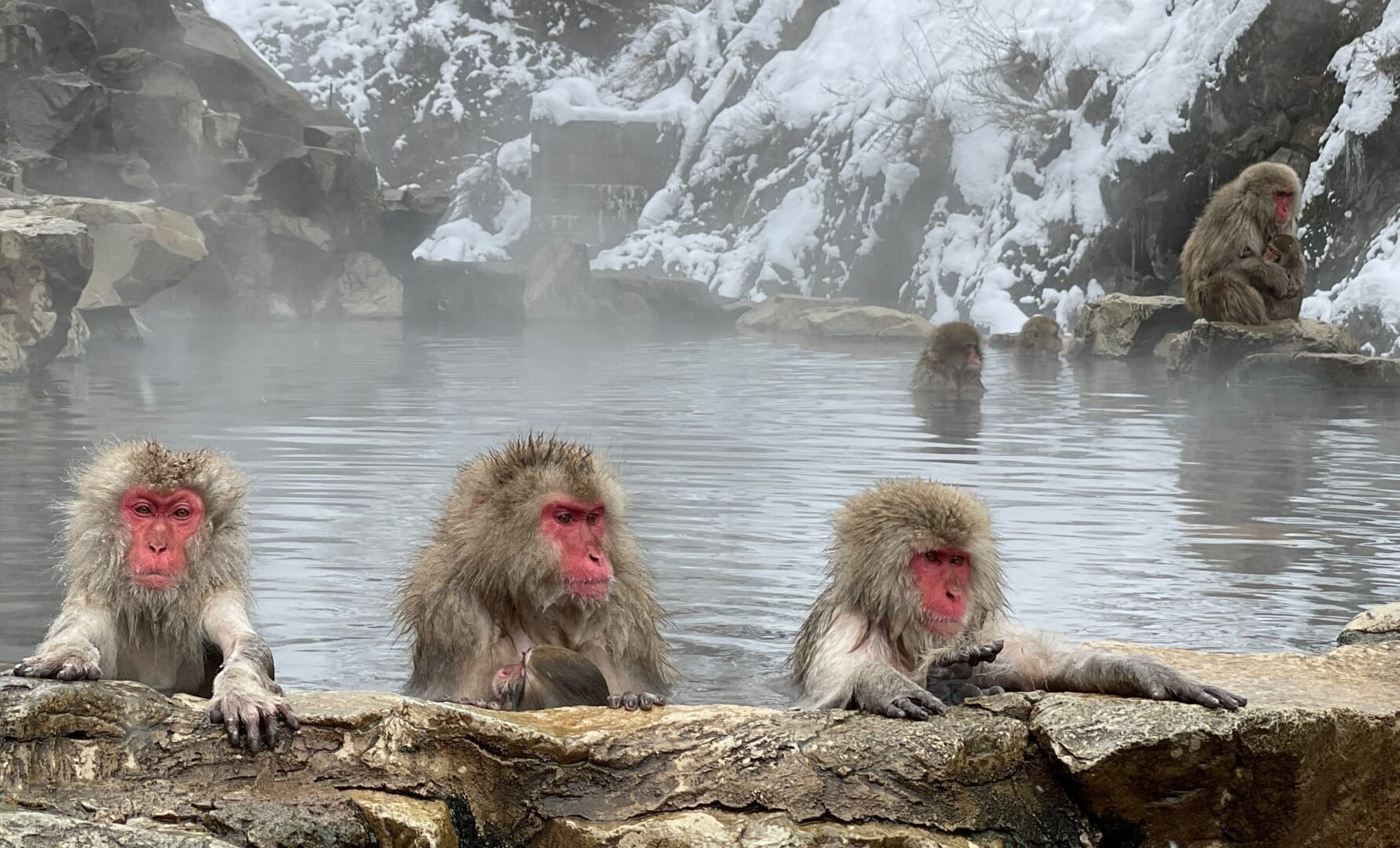
Watching these monkeys luxuriate in steaming baths amid a winter wonderland is not just adorable but also deeply fascinating, offering insights into animal behavior and adaptation. The park is accessible via a scenic trek through a forested area, adding an element of adventure to the experience.
While the monkeys are the main attraction, the surrounding landscapes offer their own quiet beauty, with snow-covered trees and the soft murmur of the Yokoyu River. Whether you’re a nature lover, a photography enthusiast, or simply looking for a unique experience, the Jigokudani Snow Monkey Park is a must-visit when you’re in the Chubu region.
More info: Jigokudani Monkey Park: Meet Snow Monkeys
5. Walk Around Historic Villages and Traditional Homes
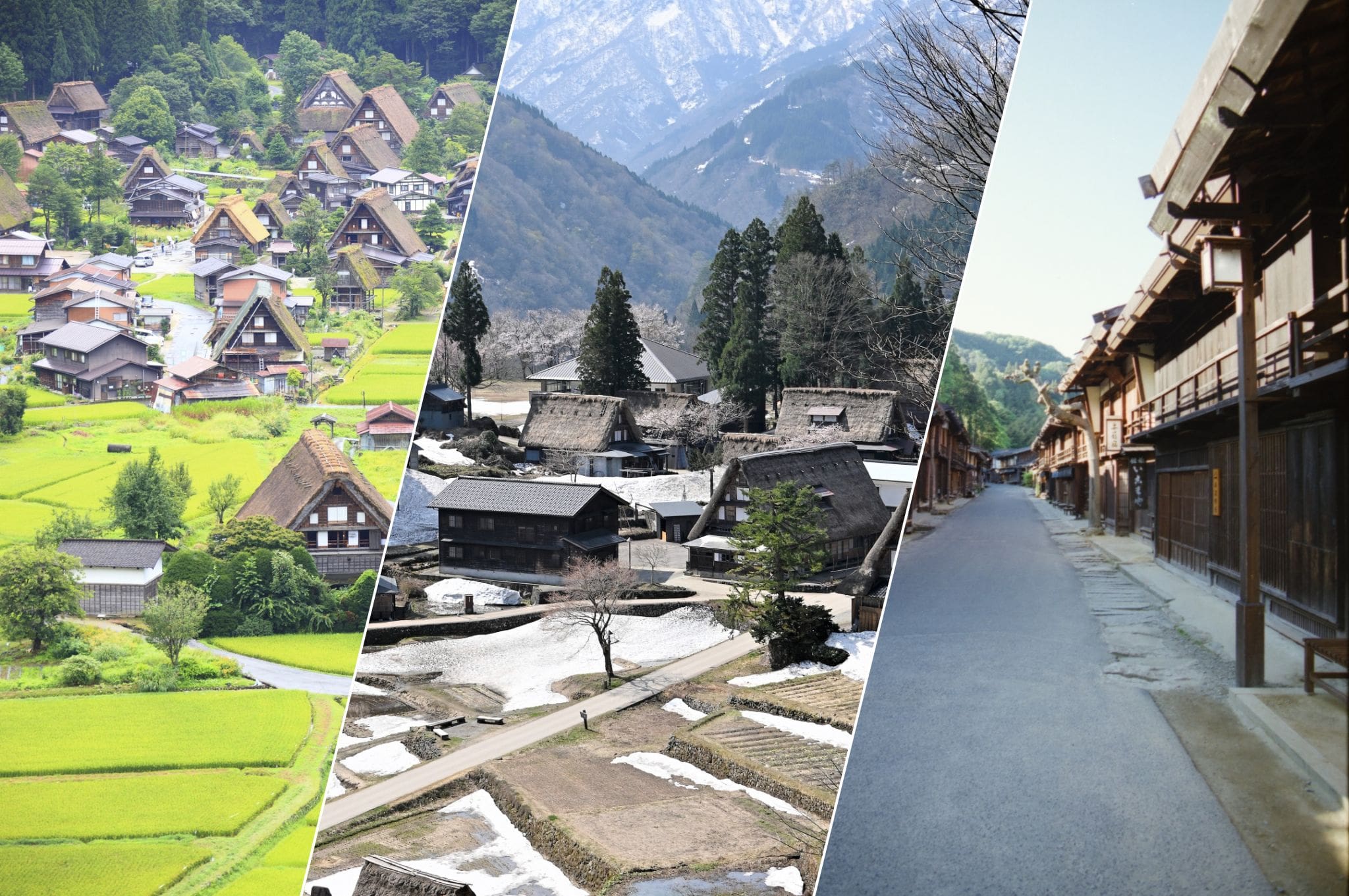
Shirakawago (白川郷) in Gifu is perhaps the most iconic, famous for its gassho-zukuri farmhouses, which feature steep thatched roofs designed to withstand heavy snowfall. Walking through the village feels like stepping back in time, offering a glimpse into rural life during Japan’s bygone eras. A very similar experience can be found nearby in Gokayama (五箇山) in Toyama.
In contrast, Tsumago (妻籠) in Nagano offers a different kind of historical experience. As a well-preserved post town along the Nakasendo route, Tsumago provides a window into the lives of travelers and samurai who once roamed these paths. The wooden buildings, stone-paved roads, and the absence of modern distractions like power lines make it a perfect setting for historical immersion. Both villages offer not just visual delights but also cultural insights, making them must-visit destinations for history buffs.
6. Have a Spiritual Retreat
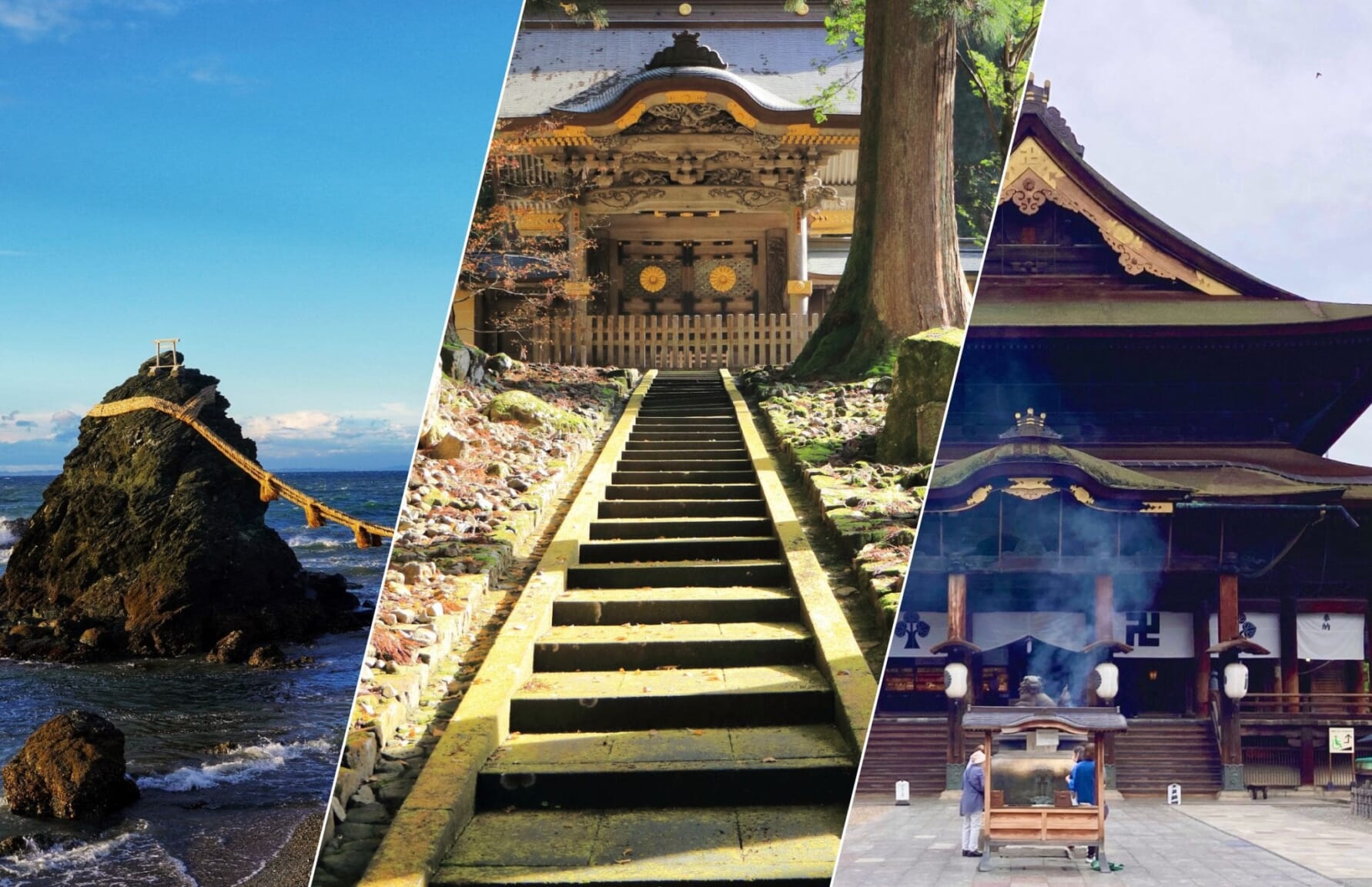
Ise Jingu (伊勢神宮) in Mie is one of the most important Shinto shrines in Japan, attracting millions of pilgrims and tourists each year. The shrine complex is set amidst a beautiful natural landscape, offering a tranquil space for reflection and prayer.
You can also deepen your spiritual journey with a Zen meditation session at Eiheiji Temple (永平寺) In Fukui, one of the two main temples of the Sōtō school of Zen Buddhism. The temple’s serene environment, surrounded by ancient cedar trees, provides the perfect backdrop for meditation and mindfulness practices.
Adding to this spiritual mosaic is Zenkoji (善光寺) in Nagano, a 7th-century Buddhist temple that holds a significant place in Japanese history. Known for its “Gokaicho” ceremony, where a replica of a hidden Buddha statue is revealed to the public every 6-7 years, Zenko-ji offers another layer of spiritual richness.
Whether you’re a spiritual seeker or simply looking for a moment of peace, these retreats offer a soul-enriching experience that transcends religious boundaries.
▶ Ise Jingu official website: https://www.isejingu.or.jp/en/
▶ Eiheji official website: https://daihonzan-eiheiji.com/en/
▶ Zenkoji official website: https://www.zenkoji.jp/en/
7. Have Fun in Japan’s Dinosaur Capital
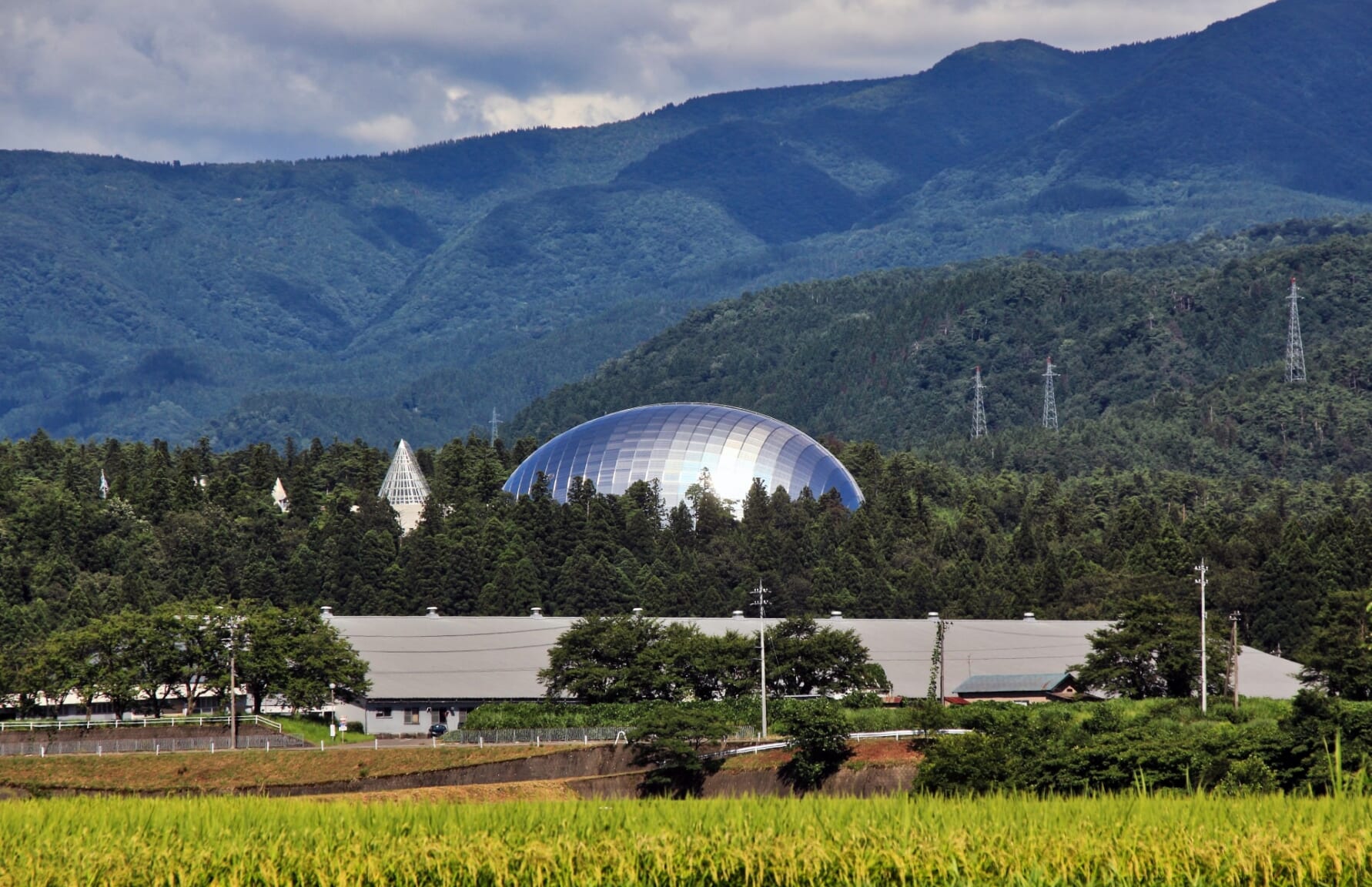
The museum’s exhibits are world-class, featuring life-sized dinosaur skeletons, fossilized footprints, and interactive displays that make the subject come alive. Whether you’re traveling with kids or you’re a kid at heart, the museum offers a captivating experience that combines education with entertainment. It’s not every day that you get to walk alongside dinosaurs, making this a truly unique and unforgettable adventure.
 Access Access |
10-min drive from Hishima Station |
|---|---|
 Official Website Official Website |
https://www.dinosaur.pref.fukui.jp/en/ |
8. Art and Craftsmanship Experiences

In Gifu and Fukui, the traditional craft of Washi (和紙) paper-making offers another hands-on experience. This Japanese paper, made from mulberry fibers, has a variety of uses, from calligraphy to origami. Participating in a Washi workshop allows you to create your own piece of art while learning about this ancient craft. These workshops are not just tourist activities; they are a gateway into the cultural richness that defines the Chubu region.
9. Soak in the Best Onsen Towns of Chubu

Nozawa Onsen (野沢温泉) in Nagano offers a unique blend of winter sports and hot springs, providing the perfect way to unwind after a day on the slopes. Shibu Onsen (渋温泉), also in Nagano, is a historic hot spring town with a charming atmosphere, cobblestone streets, and a series of nine public baths, each said to cure different ailments.
If you’re looking for relaxation, beauty, or even some therapeutic benefits, the onsen towns of Chubu offer a steamy escape from the everyday routine.
▶ Gero Onsen official website: https://www.gero-spa.or.jp/lg_en/
▶ Nozawa Onsen official website: https://nozawakanko.jp/about/hot_spring/_
▶ Shibu Onsen official website: https://www.shibuonsen.net/english/
More info: 15 Best Onsen Towns in Japan
10. Enjoy the Best Culinary Delights
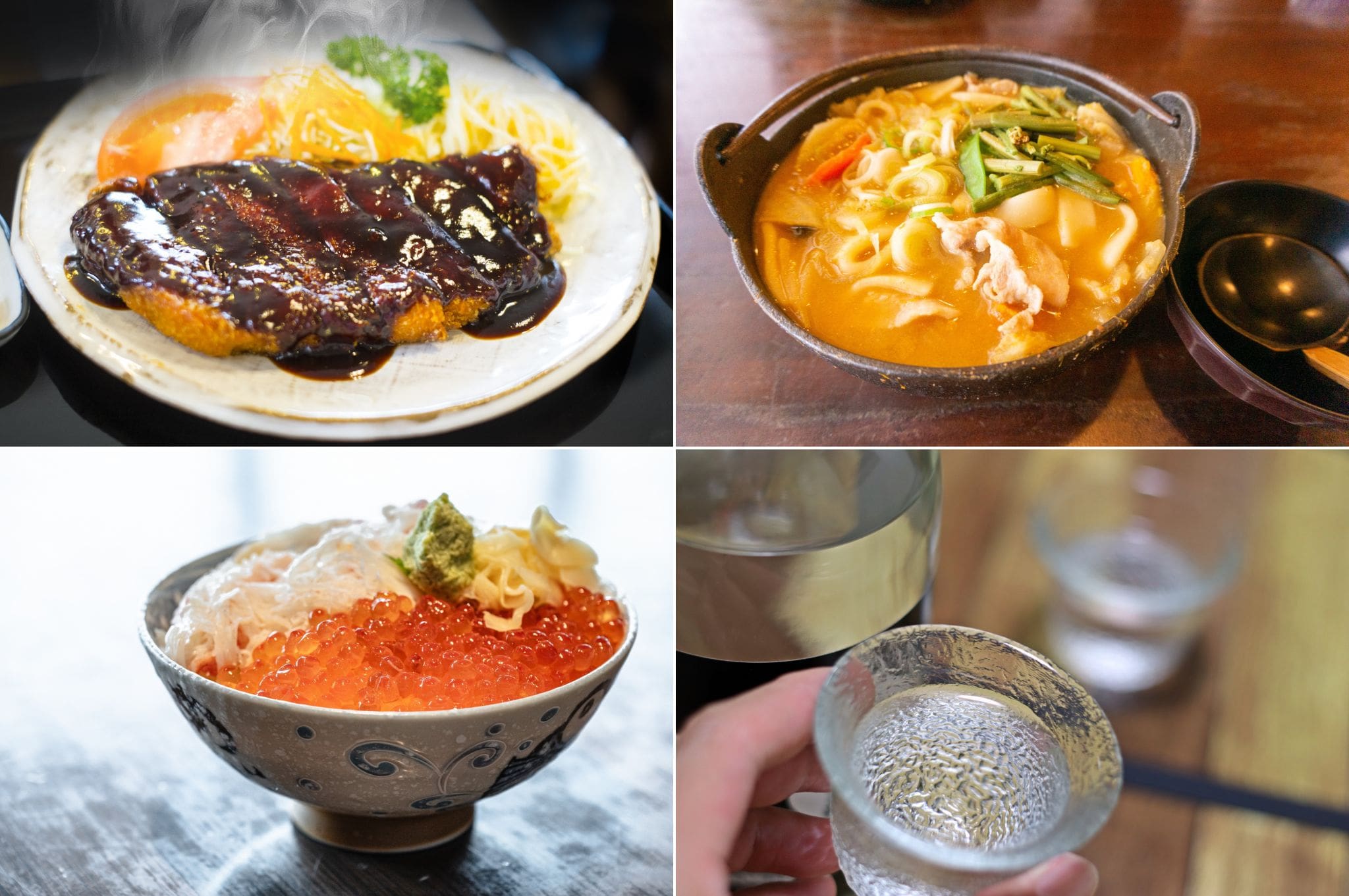
Seafood is a highlight along the coastlines of Ishikawa and Toyama, where delicacies like Kano crab and firefly squid are must-tries. Niigata, renowned for its high-quality rice, naturally leads to exceptional sake. Visiting a local brewery for sake tasting is an experience not to be missed. The Chubu region promises a culinary journey that complements its cultural and natural attractions for sake and foodie enthusiasts.
<<Buy your bullet train tickets here!>>
<<Buy your JR Takayama-Hokuriku Area Tourist Pass here!>>
Best Things to Do in Yamanashi
Yamanashi Prefecture (山梨県) is synonymous with Mount Fuji, Japan’s most iconic peak. While climbing the mountain is a must-do, the region offers more, such as the scenic Chureito Pagoda, which provides a stunning backdrop of Mount Fuji, especially during cherry blossom season. Yamanashi is also famous for its lakes, like Lake Kawaguchi, where you can enjoy boating and fishing. Events like the Fuji Shibazakura Festival, showcasing vibrant moss phlox fields, attract thousands of visitors. When it comes to food, don’t miss out on “Hoto,” a comforting noodle soup, and the region’s exquisite wines, thanks to its flourishing vineyards.
▽See more attractions in Yamanashi!▽
Best Things to Do in Nagano
Nagano Prefecture (長野県) is a paradise for outdoor enthusiasts. Known for its ski resorts like Hakuba and Nozawa Onsen, it’s a winter sports haven. But the region is not just about snow; the historic Matsumoto Castle and the Jigokudani Monkey Park, where snow monkeys bathe in hot springs, are must-visits. Events like the Dosojin Fire Festival in Nozawa Onsen offer cultural insights. For foodies, “Soba” buckwheat noodles and “Oyaki,” a stuffed dumpling, are local specialties you must try.
▽See more attractions in Nagano!▽
Best Things to Do in Niigata
Niigata Prefecture (新潟県) is renowned for its high-quality rice, which naturally leads to exceptional sake. Visiting a local brewery is a must, but don’t overlook the region’s natural beauty. Sado Island offers unique experiences like Tub-Boat riding, and the Yahiko Shrine is a spiritual hotspot. The Niigata Festival, featuring traditional dances and fireworks, is a summer highlight. When it comes to food, the region’s rice pairs perfectly with local seafood, especially the “Noppe” stew, a mix of seasonal vegetables and fish.
▽See more attractions in Niigata!▽
Best Things to Do in Toyama
Toyama Prefecture (富山県) is a nature lover’s dream, most famous for the Tateyama Kurobe Alpine Route, which offers stunning alpine scenery. The Kurobe Dam, Japan’s tallest, is another engineering marvel set against a natural backdrop. Toyama Bay is known for its “Firefly Squid,” which creates a natural light show, a phenomenon best witnessed during the Hotaruika Museum’s annual event. Speaking of food, Toyama is famous for its sushi, particularly “Masu-zushi,” a pressed trout sushi that’s a local delicacy.
▽See more attractions in Toyama!▽
Best Things to Do in Ishikawa
Ishikawa Prefecture (石川県) is a cultural treasure trove, most famous for its Kenrokuen Garden in Kanazawa, one of the Three Great Gardens of Japan. The garden is a year-round attraction, offering seasonal beauty from cherry blossoms to autumn foliage. Kanazawa also boasts the Nagamachi samurai district and the Higashi-Chaya geisha district, both offering a glimpse into Japan’s feudal past. Events like the Hyakumangoku Festival celebrate this rich history with parades and traditional performances. When it comes to food, Ishikawa is renowned for its seafood, particularly the Kano crab and Noto beef, a must-try local delicacy.
▽See more attractions in Ishikawa!▽
Best Things to Do in Fukui
Fukui Prefecture (福井県) is a unique blend of natural history and spirituality. The Fukui Prefectural Dinosaur Museum is a world-class facility that offers an educational and fascinating experience for all ages. But Fukui is not just about prehistoric times; it’s also a spiritual center with temples like Eihei-ji, a significant site for Zen Buddhism. The annual Habaki-San Fire Festival is a mesmerizing event featuring fire-walking rituals. As for food, Fukui is famous for its soba noodles and Echizen crab, offering a culinary experience that complements its cultural richness.
▽See more attractions in Fukui!▽
Best Things to Do in Shizuoka
While Shizuoka Prefecture (静岡県) shares the iconic Mount Fuji with Yamanashi, it offers its own unique attractions. The Miho Pine Grove offers a different, yet equally stunning, backdrop to Mount Fuji, and the Kunozan Toshogu Shrine provides panoramic views of Suruga Bay. Shizuoka is also famous for its tea plantations; the city of Kakegawa, in particular, is a must-visit for tea enthusiasts. Events like the Shizuoka Festival showcase traditional dances and floats, adding a cultural dimension to your visit. When it comes to food, Shizuoka is famous for its “Sakura Ebi,” a type of cherry shrimp used in various local dishes.
▽See more attractions in Shizuoka!▽
Best Things to Do in Aichi
Aichi Prefecture (愛知県) is often associated with its industrial prowess, being the birthplace of Toyota, but it’s also rich in history and culture. Nagoya Castle, with its golden shachihoko, is a must-visit, as is the Osu Shopping District, where you can find everything from electronics to traditional Japanese wares. The Atsuta Shrine, one of the most important Shinto shrines in Japan, offers a peaceful retreat in the heart of the city. Events like the Nagoya Festival bring the streets to life with parades and traditional performances. When it comes to food, Aichi is famous for its “Hitsumabushi,” a grilled eel dish that’s a local delicacy.
▽See more attractions in Aichi!▽
Best Things to Do in Gifu
Gifu Prefecture (岐阜県) is a haven for traditional Japanese crafts and stunning natural landscapes. The historic village of Shirakawa-go, with its unique gassho-zukuri farmhouses, is a UNESCO World Heritage site and a must-visit. Gifu is also famous for its Washi paper-making and the traditional Ukai cormorant fishing on the Nagara River. Events like the Gujo Odori Dance Festival offer a lively cultural experience. For food, Gifu is renowned for its Hida beef, a high-quality meat that rivals Kobe and Wagyu, and “Keichan,” a local chicken dish.
▽See more attractions in Gifu!▽
Best Things to Do in Mie
Mie Prefecture (三重県) is perhaps best known for the Ise Grand Shrine, one of the most important spiritual centers in Japan. The shrine is set amidst stunning natural beauty, offering a tranquil space for reflection. But Mie is not just about spirituality; it’s also a coastal paradise. The Toba Aquarium and the Mikimoto Pearl Island offer unique marine experiences. Events like the Kumano Fireworks Festival light up the summer skies and attract thousands of visitors. When it comes to food, Mie is famous for its Matsusaka beef and Ise-ebi lobster, both of which offer a culinary experience that’s as rich as its cultural and natural attractions.
▽See more attractions in Mie!▽
Getting to Chubu
From Tokyo, the most convenient way to reach the Chubu region from Tokyo is via the Shinkansen. The Tokaido Shinkansen connects Tokyo to Nagoya, the largest city in the Chubu region, in just under 2 hours. From Nagoya, you can easily access other parts of Chubu by local trains or buses. But if you’re heading to a specific part of Chubu that’s farther from Nagoya, flying might be a good option. Chubu Centrair International Airport near Nagoya serves both domestic and international flights. The airport is about 1.5 hours from Tokyo by plane.
From Osaka, you can take the Tokaido Shinkansen to Nagoya, which takes about 1 hour. Once in Nagoya, you can use local transportation to reach your final destination in the Chubu region.
<<Buy your bullet train tickets here!>>
<<Buy your JR Takayama-Hokuriku Area Tourist Pass here!>>
▽Subscribe to our free news magazine!▽
For more information about Things to do in Japan, be sure to check our other articles down below.
▽Related Articles▽
▼Editor’s Picks▼
Written by
Photographer, journalist, and avid urban cyclist, making sense of Japan since 2017. I was born in Caracas and lived for 14 years in Barcelona before moving to Tokyo. Currently working towards my goal of visiting every prefecture in Japan, I hope to share with readers the everlasting joy of discovery and the neverending urge to keep exploring.





